- While teams are used to optimizing their own respective areas of responsibility, there is lack of clarity on the overall core SDLC process resulting in applications being released that are of poor quality.
- Software development teams are struggling to release on time and within budget.
- Teams do not understand the overall process, are not communicating well, and traceability is hard to achieve.
- Each team claims to be optimized yet the final deliverable doesn’t reflect the expected quality.
Our Advice
Critical Insight
- Optimizing can make you worse. One cannot just optimize locally – the SDLC must be optimized in its entirety to ensure traceability across the process.
- Separate process from framework.
You don’t need to “Go Agile” or follow other industry jargon to effectively optimize your SDLC. - SDLC process improvement is ongoing.
Start with your team’s current capabilities and optimize. You should set expectations that new improvements will always come in the future.
Impact and Result
- Use a systematic framework to bring out local optimizations as potential candidates for SDLC optimization.
- Prioritize those candidates that will aid in optimizing the overall core SDLC process.
- Create the necessary governance and control structures to sustain the changes.
- Use Info-Tech tools and templates to accelerate your process optimization.
Member Testimonials
After each Info-Tech experience, we ask our members to quantify the real-time savings, monetary impact, and project improvements our research helped them achieve. See our top member experiences for this blueprint and what our clients have to say.
Client
Experience
Impact
$ Saved
Days Saved
Southwest Gas Corporation
Workshop
8/10
N/A
10

Application Development Throughput
Please note: This course will be updated in September 2023.
Local optimization isn’t the answer – you must examine the entire SDLC.
This course makes up part of the Applications Certificate.
- Course Modules: 4
- Estimated Completion Time: 2-2.5 hours
- Featured Analysts:
- Altaz Valani, Sr. Research Director, Applications Practice
- Gord Harrison, SVP of Research and Advisory
Workshop: Create a Horizontally Optimized SDLC to Better Meet Business Demands
Workshops offer an easy way to accelerate your project. If you are unable to do the project yourself, and a Guided Implementation isn't enough, we offer low-cost delivery of our project workshops. We take you through every phase of your project and ensure that you have a roadmap in place to complete your project successfully.
Module 1: Document Your Current SDLC
The Purpose
- Understand SDLC current state.
Key Benefits Achieved
- Understanding of your current SDLC state and metrics to measure the success of your SDLC optimization initiative.
Activities
Outputs
Document the key business objectives that your SDLC delivers upon.
- Documented business objectives
Document your current SDLC process using a SIPOC process map.
- Documented SIPOC process map
Identify appropriate metrics in order to track the effectiveness of your SDLC optimization.
- Identified metrics to measure the effectiveness of your SDLC optimization
Document the current state process flow of each SDLC phase.
- Documented current state process flows of each SDLC phase
Document the control points and tools used within each phase.
- Documented control points and tools used within each SDLC phase
Module 2: Assess Challenges and Define Root Causes
The Purpose
- Understand current SDLC challenges and root causes.
Key Benefits Achieved
- Understand the core areas of your SDLC that require optimization.
Activities
Outputs
Identify the current challenges that exist within each SDLC phase.
- Identified current challenges
Determine the root cause of the challenges that exist within each SDLC phase.
- Identified root causes of your SDLC challenges
Module 3: Determine Your SDLC Optimization Initiatives
The Purpose
- Understand common best practices and the best possible optimization initiatives to help optimize your current SDLC.
Key Benefits Achieved
- Understand the best ways to address your SDLC challenges.
Activities
Outputs
Define optimization initiatives to address the challenges in each SDLC phase.
- Defined list of potential optimization initiatives to address SDLC challenges
Module 4: Define SDLC Target State
The Purpose
- Define your SDLC target state while maintaining traceability across your overall SDLC process.
Key Benefits Achieved
- Understand what will be required to reach your optimized SDLC.
Activities
Outputs
Determine the target state of your SDLC.
- Determined SDLC target state
Determine the people, tools, and control points necessary to achieve your target state.
- Identified people, processes, and tools necessary to achieve target state
Assess the traceability between phases to ensure a seamlessly optimized SDLC.
- Completed traceability alignment map and prioritized list of initiatives
Module 5: Prioritize Initiatives and Develop Rollout Strategy
The Purpose
- Define how you will reach your target state.
Key Benefits Achieved
- Create a plan of action to achieve your desired target state.
Activities
Outputs
Gain the full scope of effort required to implement your SDLC optimization initiatives.Gain the full scope of effort required to implement your SDLC optimization initiatives.
- Level of effort required to implement your SDLC optimization initiatives
Identify the enablers and blockers of your SDLC optimization.
- Identified enablers and blockers of your SDLC optimization
Define your SDLC optimization roadmap.
- Defined optimization roadmap
Create a communication plan to share initiatives with the business.
- Completed communication plan to present your optimization strategy to stakeholders

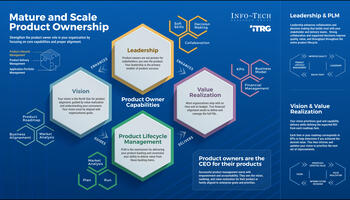 Mature and Scale Product Ownership
Mature and Scale Product Ownership
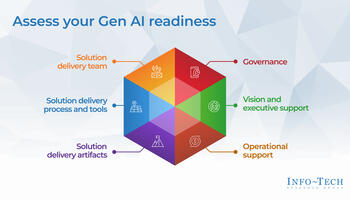 Adopt Generative AI in Solution Delivery
Adopt Generative AI in Solution Delivery
 Estimate Software Delivery With Confidence
Estimate Software Delivery With Confidence
 Modernize Your SDLC
Modernize Your SDLC
 Create a Horizontally Optimized SDLC to Better Meet Business Demands
Create a Horizontally Optimized SDLC to Better Meet Business Demands
 Select and Use SDLC Metrics Effectively
Select and Use SDLC Metrics Effectively
 Improve Application Development Throughput
Improve Application Development Throughput
 Activate Your Augmented Reality Initiative
Activate Your Augmented Reality Initiative
 Spread Best Practices With an Agile Center of Excellence
Spread Best Practices With an Agile Center of Excellence
 Perform an Agile Skills Assessment
Perform an Agile Skills Assessment
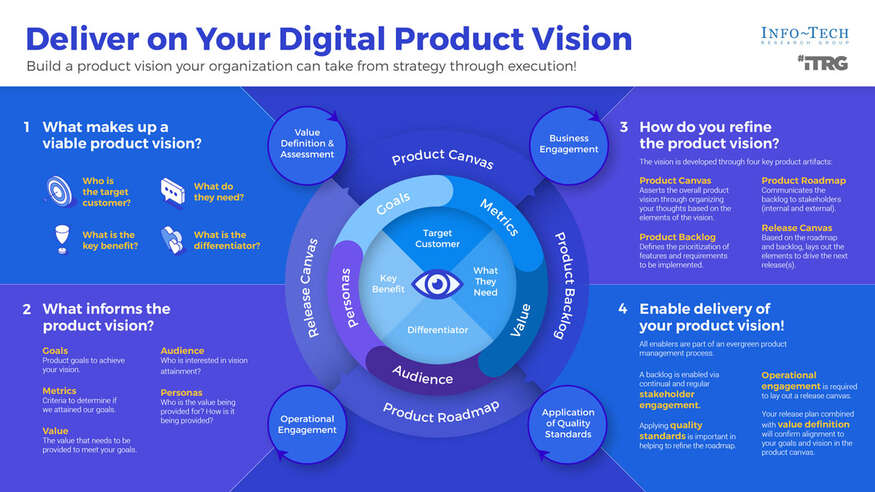 Deliver on Your Digital Product Vision
Deliver on Your Digital Product Vision
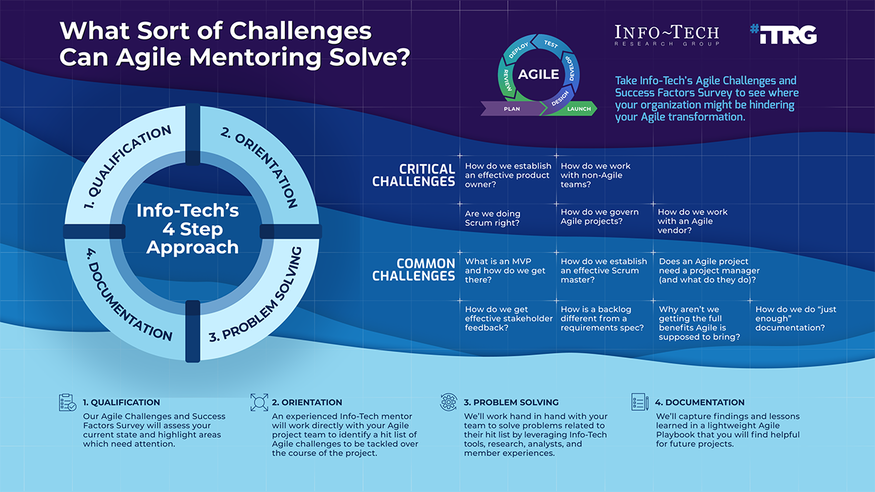 Mentoring for Agile Teams
Mentoring for Agile Teams
 Implement DevOps Practices That Work
Implement DevOps Practices That Work
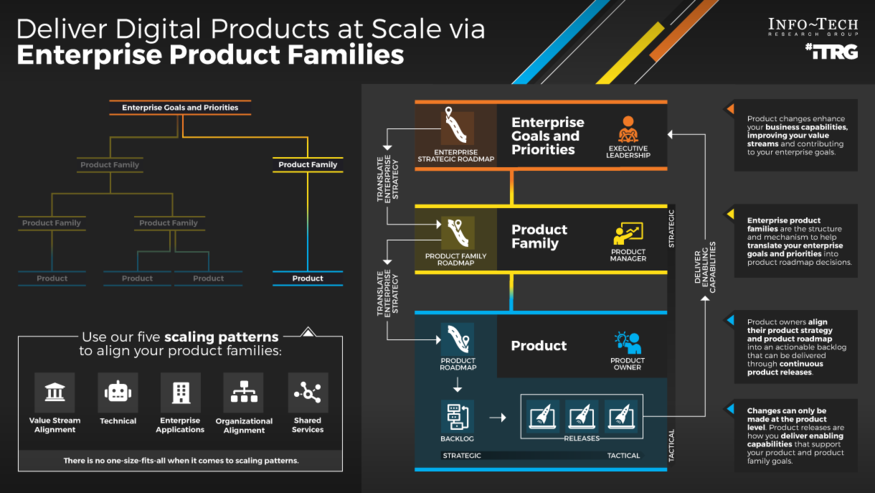 Deliver Digital Products at Scale
Deliver Digital Products at Scale
 Enhance Your Solution Architecture Practices
Enhance Your Solution Architecture Practices
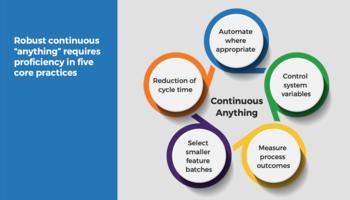 Define a Release Management Process to Deliver Lasting Value
Define a Release Management Process to Deliver Lasting Value
 2020 Applications Priorities Report
2020 Applications Priorities Report
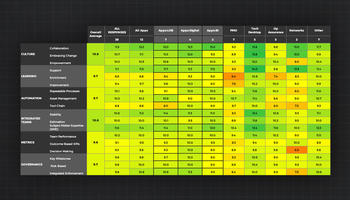 Agile Readiness Assessment Survey
Agile Readiness Assessment Survey
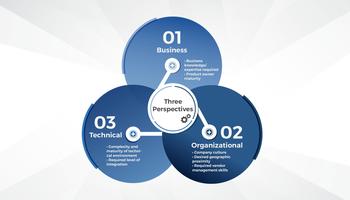 Define a Sourcing Strategy for Your Development Team
Define a Sourcing Strategy for Your Development Team
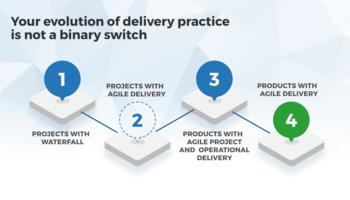 Define the Role of Project Management in Agile and Product-Centric Delivery
Define the Role of Project Management in Agile and Product-Centric Delivery
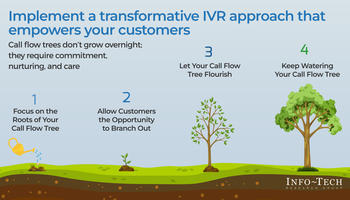 Implement a Transformative IVR Experience That Empowers Your Customers
Implement a Transformative IVR Experience That Empowers Your Customers
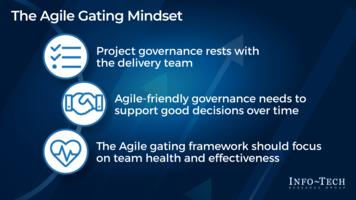 Create an Agile-Friendly Project Gating and Governance Approach
Create an Agile-Friendly Project Gating and Governance Approach
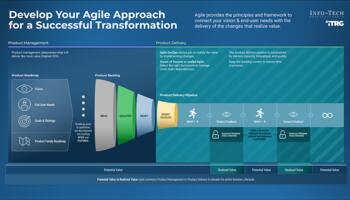 Develop Your Agile Approach for a Successful Transformation
Develop Your Agile Approach for a Successful Transformation
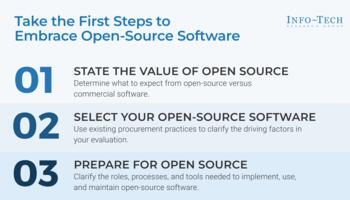 Take the First Steps to Embrace Open-Source Software
Take the First Steps to Embrace Open-Source Software
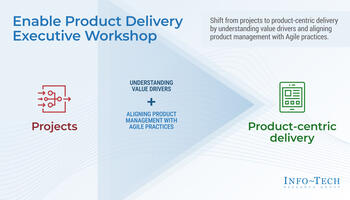 Enable Product Delivery – Executive Leadership Workshop
Enable Product Delivery – Executive Leadership Workshop